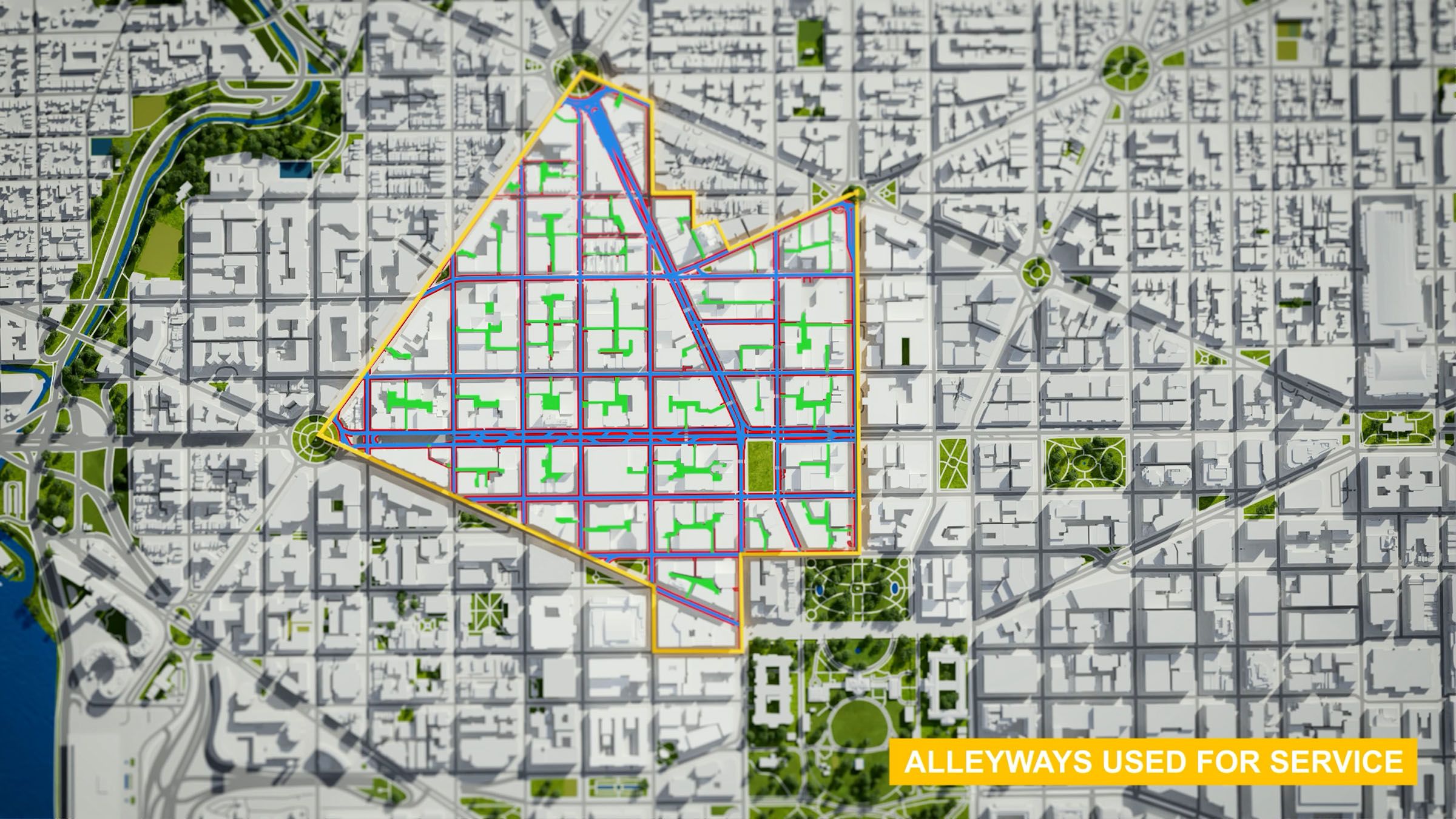WDCEP invited Chen to speak on the Annual Meeting’s theme, The Shape of DC, focusing on how the urban environment and physical spaces can change the future of business in the Nation’s Capital. Louis Dubin, Managing Partner of Redbrick LMD, ODA’s development partner on the largest timber building in DC, introduced Chen. WDCEP also released its 2022/2023 Annual Development Report (wdcep.co/dcdr23)
ODA’s research into the Golden Triangle, one of the neighborhoods in the Central Business District, revealed 73% of buildings are offices, and many are over 60 years old. Only 33% of them are Class A, with many unsuitable for the modern work environment. WIth a steep decline in pedestrian engagement and utilization since the beginning of the pandemic and wide implementation of work from home policies, the vacancy rate is the highest it has ever been, posing a huge risk for the city’s financial stability, and the loss of billions of dollars over the next years in property taxes.
“We’d like to bring back the beating heart of DC by creating an active public realm that doesn’t rely solely on commuters but is attractive to people from all around,” said Chen. “At ODA, we have been asking ourselves these questions for quite some time. This is not just a DC problem, it is a global plague on our cities.”
Chen introduced his concept, The DC Greenways Project, which looks to create a meaningful public realm, convert existing office buildings into a mixed-use campus with affordable retail on the ground floor and a pathway of expanded alleyways that become a major public asset.
Chen proposed two surgical changes. First, identify buildings in the district that are too deep for modern office use or residential conversion, and then incentivize developers to cut them at the alleyway side, making them convertible to residential use, while relocating the floor area lost to the roof. The value in the upper floors is higher due to the light, air, and views, and will be a major driving factor for developers and owners. The new courtyards created by this cut will become “privately owned public space,” expanding alleyways into landscaped gardens open to all.
Second, for underutilized ground floor retail space, Chen proposed a new inclusionary, or affordable, retail program. Managed by an independent body, owners and developers can exchange the underused ground retail space for floor area at the top of a building. This ground floor space will then be rented at a nominal, regulated cost to local activators in need of space - including classrooms, performance centers, artist studios, sports facilities, and other gathering spaces.
“The heart of the Golden Triangle neighborhood could become a living destination with increased motivation to convert more buildings to residential, and the new local population will demand a new type of engaging retail,” Chen said. “The hidden courtyards and alleyways will become the backbone of this community, making the area a more attractive place to live and work. The affordable ground floors created by the inclusionary program will cater to the needs of the community, leading to a fun, diverse, and walkable neighborhood, drawing people back to the city center.”







